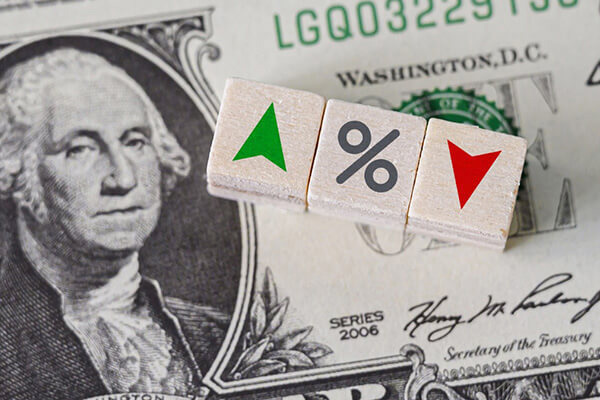Here’s What a Fed Rate Cut Means For Your Money
In March 2020, the Fed cut its target Federal funds rate to 0%-.25%, one of the lowest targets possible, but what does that really mean?
The Federal Reserve (Fed for short) may periodically cut or raise its interest rate in an attempt to spur the economy. A Fed rate cut can make borrowing money less expensive, leading companies and consumers to borrow and spend money. It can also make saving your money less enticing, as you may be earning less interest on your savings.
While you don’t receive the Federal funds rate on your savings or pay it on your debts, the rate drop can open up new opportunities or cost you money—here’s how.
You May Earn Less Interest on Savings
The Federal Reserve System is the nation’s central bank, and the Federal funds rate is the rate that banks may pay when borrowing money from other banks. In turn, banks use the Fed rate as a base for the rate they pay to customers or charge customers.
The change might not take place right away, but if you keep money in a savings account or another interest-bearing deposit account, you may have seen your interest rate drop after a Fed interest rate cut.
However, banks and credit unions base rates on more than just the Fed rate. There can be large differences between the rates you receive on different accounts. Even after a rate cut, you can still shop around to try and find the best rate for your savings.
You Could Pay Less for Credit Card Debt
Unless you pay your credit card bill in full every month or have a promotional 0% rate, you may be paying steep interest. Your credit card company may also charge you interest on cash advances, even if you pay your bill in full.
Many credit cards have variable interest rates, meaning the rate can go up or down based on a benchmark interest rate. The Fed rate itself often isn’t used as a benchmark. Many credit card providers follow the prime rate and Libor, the rate that international banks charge each other, when deciding their rates. However, these benchmarks often follow changes in the Fed rate, so a Fed rate cut can lead to lower interest rates on credit cards.
Still, it’s best to pay your credit card bill in full to avoid interest. Credit cards have some of the highest interest rates of any type of loan, and a .25% rate drop saves you only about $2.50 a year on a $1,000 balance.
Student Loan Borrowers Might Not See a Change
Federal student loans disbursed after 2006, along with many private student loans, have fixed interest rates. This means that the interest rate you received when you first took out your loan is the one you pay for the lifetime of the loan. But for those with older, variable-rate federal or variable-rate private student loans, you may see your loan’s interest rate drop.
A Fed interest rate cut can also help you if you want to refinance your student loans with a new, private student loan, as those may now offer lower rates. However, think through the pros and cons of refinancing, as you’ll lose any benefits and access to federal repayment or forgiveness programs if you refinance a federal loan.
Mortgages May Be Affected by Different Forces
Buying a home may be especially appealing when rates are low, as even a small change in your interest rate can have a significant impact on how much you pay overall. With mortgage rates historically low, those who already have a home may benefit from refinancing their mortgage—replacing their current loan with a new, lower-rate mortgage.
However, a Fed rate cut doesn’t automatically cause mortgage rates to drop. Some variable-rate mortgages follow the Fed’s rate, raising and lowering as the benchmark changes. Many fixed-rate mortgages often use the yields on 10-year treasury bonds, seen as a secure asset, as a benchmark. And on a local level, the housing market can have the biggest impact. Hot seller’s markets (when there are more buyers than available homes) can drive up both housing prices and insurance rates. (Think San Francisco at the height of the tech boom.)
What to Do Now
A slight rise or fall in the Fed rate might not warrant a complete rethinking of your finances, but it’s worth taking some time to see how the rate could affect you.
If you have a fixed-rate loan, look into refinancing with a lower-rate loan. Or, if you have a variable-rate loan, consider refinancing to lock in a low fixed rate if you think rates may rise again in the future. It may also be a good time to review your bank account and see if another bank may have a higher interest rate or fewer fees.
Quicken has made the material on this blog available for informational purposes only. Use of this website constitutes agreement to our Terms of Use and Privacy Policy. Quicken does not offer advisory or brokerage services, does not recommend the purchase or sale of any particular securities or other investments, and does not offer tax advice. For any such advice, please consult a professional.



